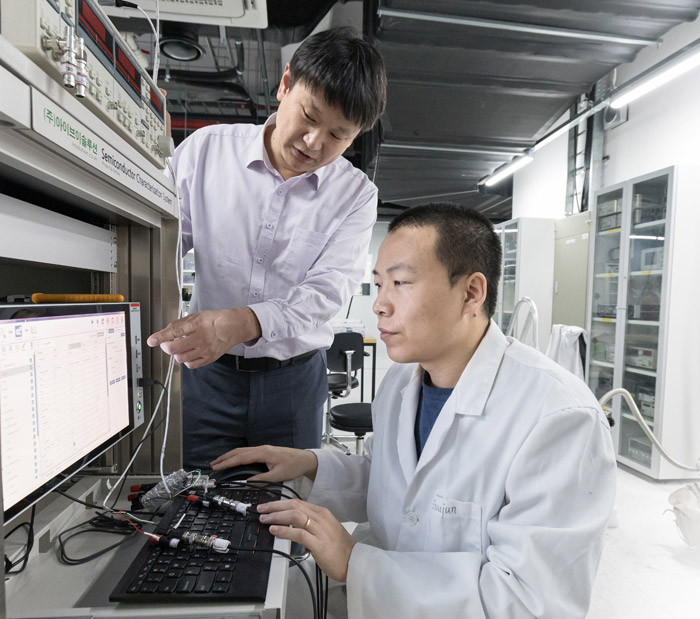Research Stories
Quantum Mechanical Interlayer Interaction for Energy-Efficient 2d Vertical Transistors
Novel Tunneling Transistors That Operate With Ultralow Operation Energy Developed Based on Quantum Mechanical Modulation of the Materials’ Properties
Energy Science
Prof.
YANG, HEEJUN
Prof. Yang’s group (with Dr. Shoujun Zheng) recently reported the development of a new conceptual tunneling transistor based on resonant tunneling and the Stark effect in 2D heterostructures, which can operate with 100 times less energy consumption in comparison to conventional silicon devices.
Recently, vertical tunneling transistors have demonstrated smaller subthreshold swing (SS) than silicon-based transistors. The 60 meV SS value of silicon devices has been considered the ultimate limit for transistors. However, inevitable thermal energy and non-resonant tunneling phenomena have prevented the development of practical tunneling transistors based on 2D materials. Prof. Yang’s research showed that the quantum mechanical Stark effect could resolve the issue in atomically thin tunneling transistors.
The Stark effect was discovered in 1914, and as a result Johannes Stark was awarded the Nobel Prize in Physics in 1919. However, there has been no experimental verification of this effect at the device scale. In Prof. Yang’s study, the Stark effect was first observed at the device scale. Moreover, traditional phonons or excitons could be completely removed in transistor operation, which enabled a precise design of the tunneling transistors with a resolution of 0.01 eV.
Prof. Yang mentioned that the tunneling transistor would be able to replace the key element in semiconductor technology, the field-effect transistor.
This research was published in Advanced Materials (IF=25.809) on February 6, 2020.
[Image] Resonant tunneling transistor based on 2Dmaterials and the corresponding band alignment of the materials


